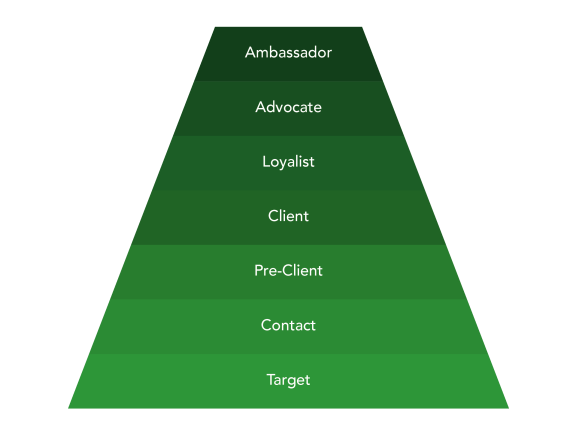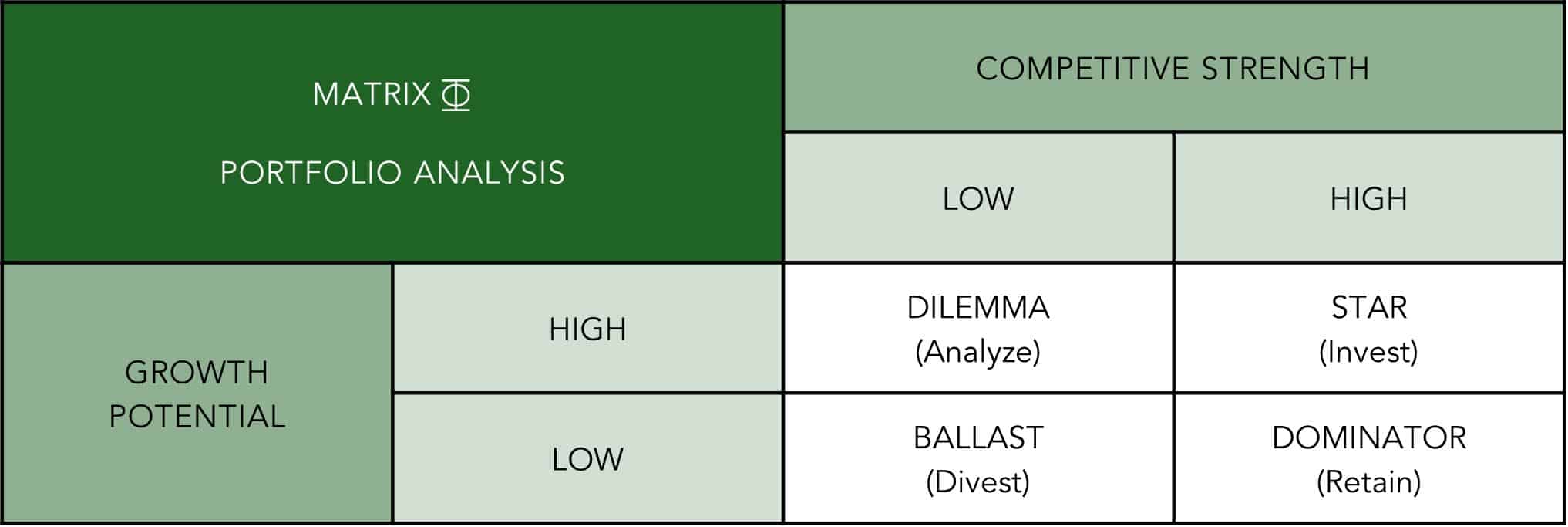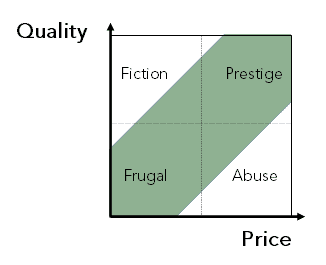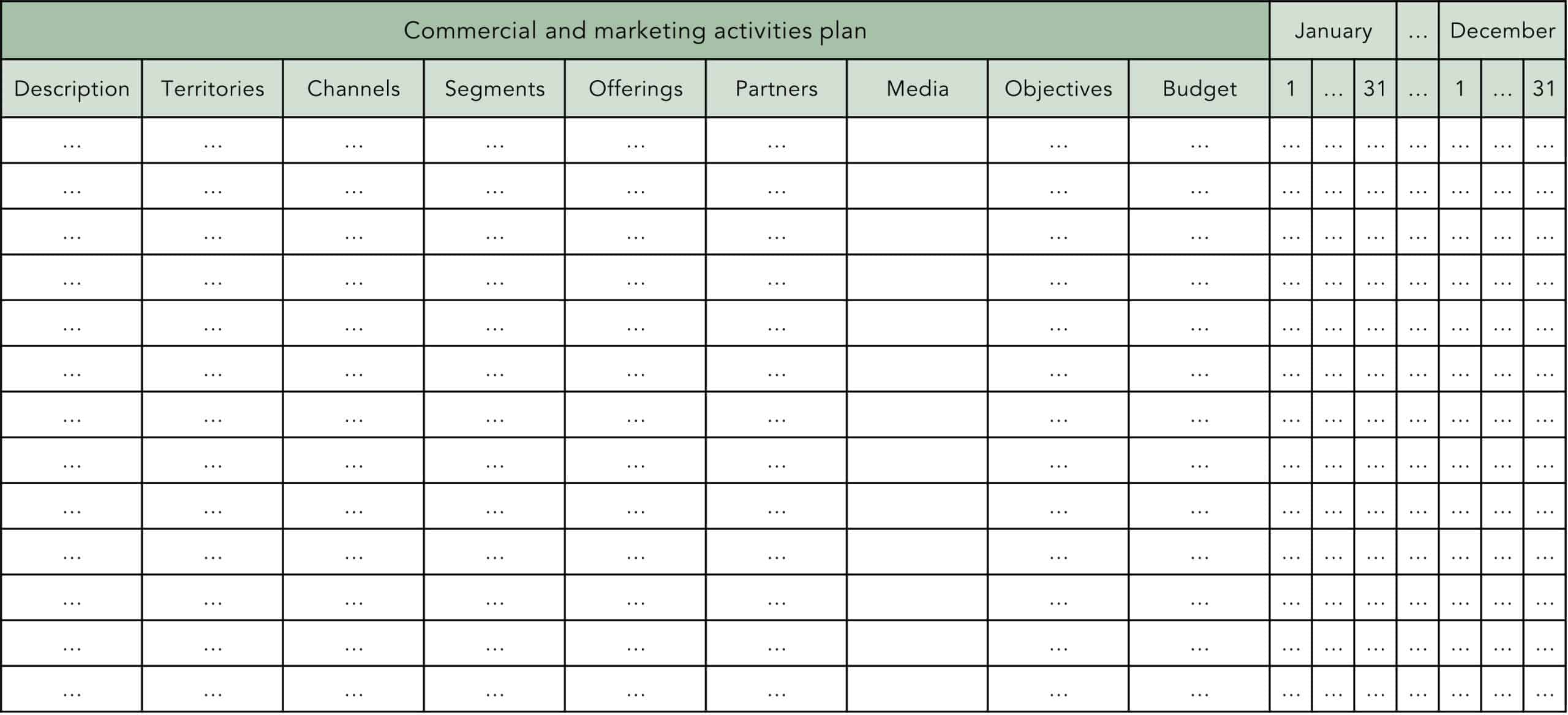How to make a marketing and sales plan

“If you fail to plan, you plan to fail”
Benjamin Franklin

Imagine you can make an articulated marketing and sales plan. Would that boost growth in your company?
Developing an articulated marketing and sales plan is not impossible, but you need to use the right approach.
A peculiar case
Some time ago I collaborated with a company - that was unable to grow - in defining its marketing and sales plan. The CEO told me that sales always fell short of targets and the marketing budget was not fully executed because he decided to cut some expenses due to the fact that they were not obtaining the expected margin from sales.
I asked him to look at the previous year's plan and he showed me two tables, one with the marketing plan and one with the sales plan. I noticed that the marketing plan only showed the monthly budget for every medium and the sales plan only showed the sales targets per month for each sales channel, but there was no connection between the two plans. So I asked him a few questions:
- Does the sales director take part in preparing the marketing plan?
- Does the marketing director take part in preparing the sales plan?
- Do you complement the definition of sales objectives with the elaboration of a commercial action plan?
- When defining the marketing plan, do you take into consideration the competitors' investment in each medium and the results of previous marketing campaigns?
- Do the marketing and the sales directors have a good working relationship?
The answer to all questions was no. No surprise, the sales director complained about marketing's poor contribution to the achievement of the sales plan and the marketing director complained about the failure to meet sales targets negatively affecting the execution of the marketing plan.
Although the case of this company was peculiar, at least the marketing and sales plans were defined at the right time of the year. In some companies, this planning is seen - wrongly - as an inconsequential exercise that interferes with operations in the last quarter of the year, which are considered essential to achieve the goals set the previous year.
This company - and all the others - must define sales and marketing plans aligning the objectives and the activities to be performed throughout the year.
Articulated marketing and sales plan
To define an articulated marketing and sales plan you need to follow the approach outlined in the diagram below:


The first activity is to clarify the growth strategy, which means understanding its six components:

- Culture: as Peter Drucker said, culture eats strategy for breakfast, so the best thing to avoid defining an inconsequential strategy is to start by clarifying the company culture, i.e. its four components:
o Mission: describes what the company does.
o Purpose: describes the reason why the company exists.
o Vision: describes how the company wants to be recognized.
o Values: describes how the people in the company behave.
- Clients: no company can compete in every market and sell to all types of clients, so it needs to choose.
As for markets, the appropriate approach is to use the PESTELEC analysis to determine their attractiveness:

In each part of the PESTELEC analysis, you can use attractiveness indicators (e.g. market growth rate on the economic side, or degree of concentration of competitors on the competitive side), or exclusion factors (e.g. war situation on the social side).
As for clients, the appropriate approach is to identify the different segments, characterize them appropriately and choose the most attractive ones considering the competitiveness of the company and the profitability of the segment:

Once the priority segments have been chosen, the next step is to define the characteristics of the ideal client in each segment (e.g. private companies, selling consumer goods, within a distance of 200 km from the country's capital, with a turnover of between €10 M and €100 M, with turnover growth less than 5% in the last year, that meet payment deadlines) for each type of offering and choose the clients who have the greatest affinity with this set of characteristics.
The last step is to classify the clients according to the depth of their relationship with the company, using the marketing pyramid:

The marketing pyramid is essential to later define the commercial and marketing action plans.
- Offering: not all the company's offers are interesting for all markets and for all clients, so you have to choose. A good approach is to use the FI portfolio analysis matrix:

Market growth potential can be determined by several factors, e.g. size, growth history, estimated growth, current market share of the company, possible market share of the company.
The company's competitive strength can be determined by various factors, such as brand strength, clients' loyalty, distribution strength of the different channels, patents and other innovations, quality of the offering, value surplus, cost structure, profit margin, production capability, financial capability, investment capability.
The analysis of the company's offering for each market and each client segment leads to the definition of sales priorities.
- Channels: without sales, there is no business. A company can have several types of sales channels, direct (e.g. personalized, store / agency / counter, web store, traveling store, phone, door-to-door) or intermediated (e.g. wholesaler, distributor, generalist retailer, specialized retailer, horeca, agent, integrator, franchise). However, not all channels are suitable for all types of offering, you need to decide which channels to develop, considering three aspects:
- Suitability of the means of sale: it depends on clients' preferences and the ability to provide them with value surplus.
- Economic viability of the channel: it depends on whether the increase in profitability (resulting from increased sales) covers the additional costs of the channel.
- Conflict between channels: top companies avoid this problem by considering an omni-channel strategy, which ensures information coherence in all channels, enables synergies between channels, defines rules of action and establishes an appropriate pricing policy.
- Price: clients use several criteria to decide on a purchase, but among them price is always of high importance, so much that it is common to relate quality to price:

Apart from the "fiction" and "abuse" situations illustrated in the diagram above, a company that has a business continuity perspective can set its price on the "frugal-prestige" continuum, however it must always consider its positioning relative to competitors:

As illustrated above, if the price set by the company is A, the positioning is "frugal" and there is room to increase the price. If the price set by the company is C, the positioning is "prestige" and the company should consider if it needs to reduce the price.
- Brand: as Philip Kotler said, the brand positions the company's offering and image to occupy a distinct place in the mind of the target market, so it is essential to define the brand in a way that responds to the following questions:
- What problems do I solve for my clients?
- Who are my target clients, what do they value and how much are they willing to pay?
- How do I differentiate myself from my competitors, that is, what attributes and benefits support my unique value proposition?
- What characteristics personify my brand?
- How do clients feel about my brand?
- Why do clients trust my brand?
Briefly, the answer to the above questions should result in a sentence: “The [brand] offers [category of offering] that are [differentiation] because [target clients] want [results].”

The second activity is to define global sales objectives by territory, channel, client segment and offering. For this, in addition to having clarified the growth strategy, you need complementary information, namely:
- Sales history: without understanding the evolution of sales in previous years and in the current year up to the time of defining the sales plan, it is more difficult to set realistic objectives, both ambitious and achievable.
- Sales forecast for the current year: it complements the sales history analysis enabling you to set realistic targets.
- Active contracts: many businesses have active contracts that will lead to sales in the following year, which reduces the uncertainty in setting goals.
- Sales potential for the following year: without understanding whether the different quadruples territory + channel + client segment + offering are stable, expanding or contracting, the risk of setting objectives that are not in line with reality increases.
- Will to grow: this is a crucial data for the definition of objectives, which can be transversal to the whole company or, more appropriately, specific to each quadruple territory + channel + client segment + offering.
Based on the above elements, it is possible to define ambitious and achievable global sales objectives, using for example a table with the structure below:


The third activity is to distribute sales objectives per month. To do this, four factors must be considered:
- Global sales objectives by territory, channel, client segment and offering: defined in the previous activity.
- Business seasonality: most companies have seasonality in their business, it is important to consider this in the sales plan, instead of considering equal goals for every month, to avoid months in which the results are much higher or much lower than expected.
- Offering life cycle: the evolution of sales over the year will depend on the stage in the life cycle of each offer (introduction, growth, maturity or decline).
- Sales channel capability: the assets (people, facilities, equipment, ...) of each sales channel in each territory have a limited elasticity, so if the global sales plan estimates growth beyond the current sales capability, an asset expansion plan must be considered (or contraction in the opposite case).
Based on the above elements it is possible to distribute sales objectives per month for the quadruples territory + channel + client segment + offering, using for example tables with the structure below:


The fourth activity is to create a commercial action plan to meet, or exceed, the objectives set in the previous two activities. This action plan has two types of activities:
- Structural activities: these activities are related to the improvement of the competitive capability of the company, for example implementing a new information system to manage the sales process, creating a new sales channel or expanding an existing one, or entering a new territory. These activities usually require investment (e.g. land, facilities, equipment, software) and the involvement of people, both from the company and, in some cases, from business partners.
- Operational activities: these activities are complement the regular activity of the sales teams in the territories and sales channels, e.g. new offer launch, CEO's visit to the facilities of key business partners, launch of a sales incentives campaign, or execution of targeted sales campaigns.
The planning of the above activities can be done using for example a table with the structure below:

As you can notice in the table above, the title includes marketing activities and there is a column for Media, the reason for this is to articulate the commercial plan with the marketing plan when carrying out the next activity.

The fifth activity is to create an integrated marketing plan aligned with the strategy, the sales plan and the commercial action plan defined previously, where the objectives to be achieved for each territory, channel, client segment and offering were set out. For this, you need to define a marketing budget and the media to be used.
To define a marketing budget, several elements need to be considered:
- Growth strategy.
- Sales plan.
- Commercial action plan.
- History of marketing budgets.
- Results of current and previous years' marketing campaigns.
- Competitors' marketing activity.
A good practice for setting the marketing budget is to simultaneously use a top-down and a bottom-up approach. The first is based on the company's spending history and the analysis of competitors' spending, the second is based on the sales plan and the commercial action plan. The combination of the two approaches will result in a marketing budget adjusted to the growth needs of the company.
Once the marketing budget has been defined, the next step is to define the media to be used. For this you need to consider all the possibilities, generally grouped according to the acronym PESO:
Paid - media paid by the company, for example:
- Advertising on TV, radio, press, physical space, shows, internet, partners.
- Sponsorship on TV, radio, press, shows, internet, partners.
- Face to face or virtual events.
- Posts / reposts by influencers on the internet.
- Patronage.
- Solidarity.
- Market research.
- ...
Earned - media earned by the company, for example:
- Search results on internet search engines.
- Posts / reposts from influencers, experts, clients, partners on the internet.
- Recommendations by influencers, experts, clients, partners.
- Articles in the press or on the internet.
- Presence in debates and/or interviews on TV, radio, internet.
- Face to face or virtual events.
- Market research.
- ...
Shared - media shared by the company, for example:
- Previous experiences (networking, projects, deliveries) shared with clients
- Posts / reposts on social networks where the company is present.
- ...
Owned - media owned by the company, for example:
- Website content.
- Face to face or virtual events.
- Market research.
- Marketing materials
- ...
After defining the media to be used in the integrated marketing plan, you need to plan its execution along with the framework of the commercial action plan developed in the previous activity. Often, you need to review this commercial action plan together with the development of the integrated marketing plan, in an iterative process, ensuring that they become articulated.

The sixth and last activity is to communicate the marketing and sales plan:
- Internally: to the sales and marketing teams and the other areas of the company.
- Externally: in a simplified form, to business partners.
By completing the sixth activity in the development of the articulated marketing and sales plan, the macro-activity plan of the business cycle Management of the FI growth methodology is completed, as illustrated in the diagram below:

The macro-activities of this business cycle are described in the article "The management cycle"
Conclusion
The articulated marketing and sales plan is essential to align the marketing and sales teams of your company, clearly defining the objectives to be achieved and the actions to be performed, which allows you to avoid divergence between these teams and misalignment with the other areas of the company.
Now you know how to make an articulated marketing and sales plan, boosting the growth of your company.
Filipe Simões de Almeida
Managing Partner, Fi Consulting
Published on 26-Oct-2022
